Public Archive
A patchy record of DIY satellite imagery and weather notes since 2020. The open-weather public archive is open to everyone willing and able to contribute.
Words for Climate
An evolving set of words chosen by contributors to reflect their experiences of the climate crisis.
Filter by
Ground Station Type
Automatic Ground Stations are local, semi-permanent stations that record and upload satellite transmissions automatically once per day. Manual ground stations are DIY and often mobile; operators manually record and upload satellite transmissions.
Satellites
The archive contains Automatic Picture Transmissions (APT) by US weather satellites NOAA-15, NOAA-18 and NOAA-19.
Nowcasts
Collective earth-sensing events led by open-weather, co-produced by a network of contributors around the world.
Contributors
A list of tagged contributors only. Please contact us if you want to be added.
Automatic Ground Stations
Search
2020-05-17 03:52:03
Sasha
,
NOAA-18
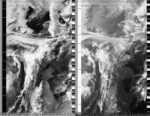
2020-07-16 03:52:03
Sasha
,
NOAA-18
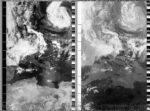
2020-07-26 03:52:03
Sasha
,
NOAA-19
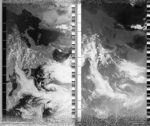
2020-09-06 03:52:00
Joaquin Ezcurra
Island in Sarmiento river,
NOAA-15


Recorded on an island in Sarmiento river, part of the Delta of Paraná river, where wetlands have been burning in the last months.
2020-09-09 03:51:59
Carl Reinemann
,
NOAA-19
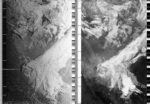
Overcast with rain showers all day. High 56F. Winds NE at 10 to 15 mph. Very Gloomy
2020-09-18 03:51:59
FamSchä
,
NOAA-19

This image was taken in the proximity of many more turnstile antennas during a group sensing session as the finale of an amazing workshop. The surrounding was an artist built compound. It was my very first recording.
2020-09-20 03:51:59
Yoshi
,
NOAA-15
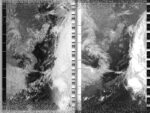
2020-09-21 03:51:59
Yoshi
,
NOAA-18
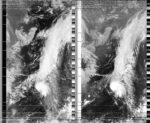
2020-09-21 03:51:58
FamSchä
,
NOAA-18
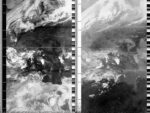
This was a family effort. Three people involved in the recording, two did it for the first time. It was an open field in the country side, clear blue sky. Many passersby were irritated by the activity. Afterwards we listened to some radio together.
2020-09-21 03:51:58
FamSchä
,
NOAA-19

This recording happened by accident. We were playing around with the antenna on the porch and suddenly the signal appeared so we decided to record it. The antenna was held by three people, one did it for the first time. It was a pleasant evening with the BBQ just heating up.
2020-09-22 03:51:58
Yoshi
,
NOAA-18
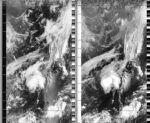
2020-10-07 03:51:58
Yoshi
,
NOAA-18
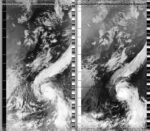
2020-10-07 03:51:58
Sasha
,
NOAA-18
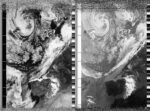
2020-11-07 03:51:58
n.n.n. collective
,
NOAA-18
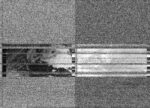

The recording was done in the proximity of Kunstverein Wagenhallen e.V. The occasion was the preparation of an exhibition dealing with Hegel's universalism and its influence on location and mapping as political practices. The area is industrial and surrounded by a lot of large metal constructions.
2020-11-07 03:51:57
n.n.n. collective
,
NOAA-19

The recording was done in the proximity of Kunstverein Wagenhallen e.V. The occasion was the preparation of an exhibition dealing with Hegel's universalism and its influence on location and mapping as political practices. The area is industrial and surrounded by a lot of large metal constructions.
2021-01-20 03:51:57
n.n.n. collective
,
NOAA-15
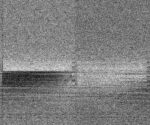
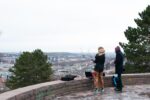
The sensing happened on a hill everyone refers to as Teehaus due to the tea house that stands there. The hill allows a North-West-South view over the city valley. It was difficult to climb the hill due to ice and there was a cold wind blowing. Our hands were extremely cold during the sensing. Since the satellite passed only at 49 degrees and the hill we were standing on was not higher than the hills surrounding the valley on the other side, we received only a very weak and partial signal.
2021-01-23 03:51:57
FamSchä
,
NOAA-15

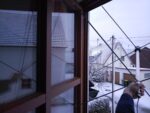
When I woke up I wanted to check the satellite passes for the day and realized there was one happening in that very moment, passing right in front of my window. I quickly assembled the antenna and caught the second half of the pass through the open window of my room.
2021-01-23 03:51:57
FamSchä
,
NOAA-18

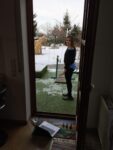
This image was received simultaneously with a friend in a different location. We had exchanged the passing times earlier in the day and then both sensed from our locations and shared our images later on. The sensing was done domestically on the porch – just stepping outside to check the satellite.
2021-01-23 03:51:57
FamSchä
,
NOAA-19

This image was received together in collaboration with my mum. We were not able to receive a signal although all the settings were correct so we tried to change location and walked to the open crossway close by. Eventually I saw the signal at 138.009.662 instead of the regular NOAA 19 frequency which I had set Cubic SDR to. I changed frequency and suddenly we received the signal and started recording. So far nobody has been able to explain this frequency shift of the satellite to me. Any hints are welcome.
2021-01-24 03:51:57
FamSchä
,
NOAA-18
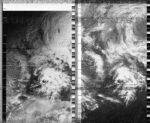

This was my dad's very first satellite sensing session. We did it in the open field on a beautiful sunny morning and a pass at almost 90 degrees.
2021-01-26 03:51:56
n.n.n. collective
,
NOAA-15

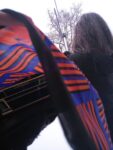
This stellite pass was recorded while it was snowing. Although the pass was happening at almost 90 degrees it was very difficult to receive the signal. We were standing on a hill that overlooks valleys on both sides. Theoretically there were no large obstructions blocking the signal and the direction of the pass was clear.
2021-03-05 03:51:56
George Ridgway
,
NOAA-18

2021-03-28 03:51:56
Olivia Berkowicz
,
NOAA-18
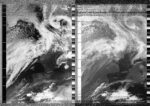
Decoding with Akademie Schloss Solitude fellows, second day of decoding
2021-03-28 03:51:56
flow
,
NOAA-18
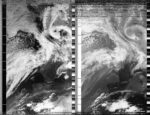
2021-03-28 03:51:56
Fanteugia
,
NOAA-18
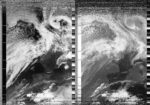
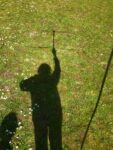
2021-07-13 03:51:56
Lothringer 13 Halle
,
NOAA-18

2021-07-20 03:51:55
Sasha Engelmann
,
NOAA-18
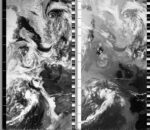
2021-07-23 03:51:55
Lothringer 13 Halle
,
NOAA-18

2021-07-24 03:51:55
Lothringer 13 Halle
,
NOAA-19

2021-07-29 03:51:55
Lothringer 13 Halle
,
NOAA-19

2021-08-13 03:51:55
Lothringer 13 Halle
,
NOAA-19

2021-08-20 03:51:54
Lothringer 13 Halle
,
NOAA-18
2021-09-02 03:51:54
Sasha Engelmann
,
NOAA-18
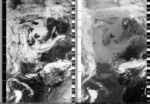
2021-09-06 03:51:54
Lothringer 13 Halle
,
NOAA-18

2021-09-11 03:51:54
Lothringer 13 Halle
,
NOAA-18

2021-09-13 03:51:54
Lothringer 13 Halle
,
NOAA-19
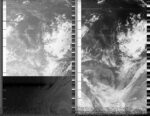
2021-09-14 03:51:54
Lothringer 13 Halle
,
NOAA-18

2021-09-17 03:51:53
Lothringer 13 Halle
,
NOAA-19

2021-09-18 03:51:53
Lothringer 13 Halle
,
NOAA-19

2021-09-19 03:51:53
Lothringer 13 Halle
,
NOAA-19

2021-09-19 03:51:53
Lothringer 13 Halle
,
NOAA-18

2021-10-07 03:51:53
Asst. Prof. Dr. Chonmapat Torasa
,
NOAA-19
2024-06-07 13:41:29
Sasha Engelmann
Hackney Downs, London,
NOAA-18
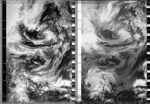
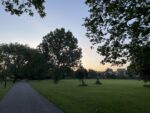
The sun was rising when I rode my bike through Hackney Downs this morning, coming back home from a club in Dalston. My limbs felt both heavy and light in the very pleasing way that limbs feel when you have been dancing for hours. People were already in the park, or maybe they had been there the whole night. I could see the faint spark of a cigarette in a huddle of bodies between the hedges. I thought about getting my radio antenna and catching a pass at dawn, but sleep was too tempting. Later, at almost 2pm, I re-emerged from my flat and went back to the park. In contrast to the soft, orange-pink glow of the early morning, the early afternoon was warm, hot and dry. As I started the pass, a man in a group of men that normally always stand around a bench at the north-east corner of the park, around thirty-forty metres away from me, yelled "Is that for free internet?!". I could only think to yell back, "No!". As I couldn't explain at such distance, I used my free arm to point to the northern horizon and traced an arc through the sky from North to South. That seemed to help. He yelled again "What are you tracking!!?" and I replied "A satellite!! An image!!". As no members of the group looked like they were going to come any nearer, I walked over to them after the pass was done, and showed them the live-decoded image. They huddled around my computer. I wondered what they might say about the weather, given that the five to six of them are always here at this bench, all day, every day, rain or shine. Instead, they asked me what the weather was going to be like. I said I was not a meteorologist, but the image was showing different patterns of clouds over the Atlantic, maybe coming to the UK. They seemed to like this. One of them said 'nice one mate' and shook my hand in the way men do when they put out their arms, bent at the elbow, with the hand close to the chest. When you close hands you end up getting pulled together in a show of comraderie.
2024-09-04 19:40:52
Melody Matin
Toronto (High Park),
NOAA-15

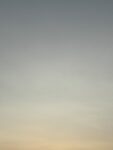
lots of mosquitoes out this evening
2024-09-08 12:39:48
Sasha Engelmann
Hackney Downs, London,
NOAA-18
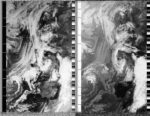
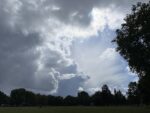
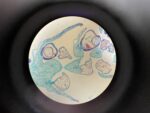
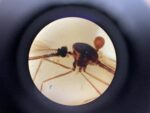
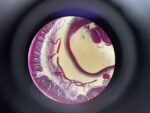
To the southeast, a gap in a towering panorama of clouds looks like a giant lens or a portal, magnifying rays of light. Two men walk by my ground station asking 'is there signal??' and then exclaiming 'you see the storm is picking up!'. Yet the wind does not rise further than a few sharp gusts and the clouds dance past. In my daily micro-weather observations, I look at 'Lumbricus' (an earthworm with its movement muscles), 'Anopheles male E' (a male mosquito) and a fragment of Selaginella sporophylls (also known as the spikemosses or clubmosses). I read that Selaginella are known as the 'fern allies' - I thought this was a nice phrase, if read non-scientifically. Some species of Selaginella are known as the 'resurrection plant' because they can survive complete dehydration, much like the lichens I wrote about yesterday. These moss-like plants roll up into brown balls, but rehydrate and expand when moistened. On this theme of 'resurrection' or 'time-traveling' or bending of temporal/ spatial ideas of life, I am reminded of a passage in the book Ceremony (1977) by Leslie Marmon Silko. It is a scene from the perspective of Tayo, a man of Laguna Indian and Mexican heritage who returns from the war in Vietnam. At dawn, Tayo is watching the life emerging around a small pool filled by a spring in the otherwise bone-dry mountains on the reservation. He observes: "When the shadows were gone, and the cliff rock began to get warm, the frogs came out from their sleeping places in small cracks and niches in the cliff above the pool. They were the colour of the moss near the spring, and their backs were spotted the colour of wet sand. They moved slowly into the sun, blinking their big eyes. He watched them dive into the pool, one by one, with a graceful quiet sound. They swam across the pool to the sunny edge and sat there looking at him, snapping at the tiny insects that swarmed in the shade and grass around the pool. He smiled. They were the rain's children. He had seen it happen many times after a rainstorm. In dried up ponds and in the dry arroyo sands, even as the rain was still falling, they came popping up through the ground, with wet sand still on their backs. Josiah said they could stay buried in the dry sand for many years, waiting for the rain to come again" (Silko, 1977: 87-88).
2024-10-11 12:24:58
Sasha Engelmann
Hackney Downs, London,
NOAA-18
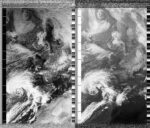
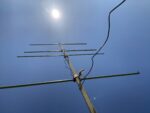
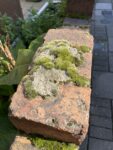
Of a day like today, Derek Jarman might write, "Crystalline sunlight, all the dark humours blown away by the wind" (1991, 235). As my partner opens the curtains in the morning, the blue of the sky pierces through the growing gaps in tree branches, blue against yellow and light brown. Before lunch I set the automatic ground station up in my flat, leaving the turnstile antenna resting against the open windowsill in the kitchen, and I head out to the park wtih my tape measure Yagi-Uda antenna. Later I enjoy comparing the images: not surprisingly, the automatic station has captured a swathe of the satellite pass to the south (as our kitchen window is south-facing) and lines of interference from the building pulse through it. Out in the park, I receive a good signal for most of the 86 degree pass, enjoying the 'crystalline' sun and the momentary break from the 'dark humours' of recent grey and rainy days.
2000-01-01 00:00:00
test,
NOAA-19
2012-12-12 12:12:12
test 1
test 1,
NOAA-19
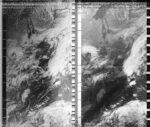
2012-12-12 12:12:12
test 2
tes 2,
NOAA-19
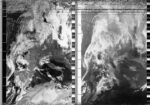
2024-11-22 08:21:11
Georgia Rhodes
Southern Ocean,
NOAA-19
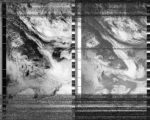
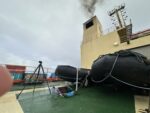
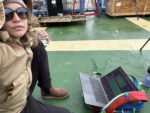
Another day, another storm in the Southern Ocean. I thought about removing the tip of my finger from my photo of my station, tucked in with the Zodiac boats and surrounded by coring equipment, but it shows a signal of how difficult it can be to operate anything that isn't tied down. The rolling of the ship and the strength of the mind make any one-handed task just on the edge of impossible. I don't expect to experience weather like this again in my lifetime, but I also don't hold a lot of expectations that anything will remain as expected.
2025-01-07 20:36:34
Pauline Woolley
The Urban Garden, Nottingham,
NOAA-19
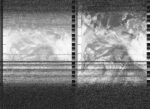
A clear cold night. The winter constellations hang overhead in all their beautiful glory. Orion, Pleiades, Auriga and Taurus drawing out the maps of ancient skies. The lawn is crispy underfoot. The UK is clear on the map except for some small parallel clouds across the counties of Cheshire and the cities of Liverpool and Chester.
1 degree Celsius
90% humidity
1001 mb
2025-05-21 12:06:00
Richard A Carter
University of York, Campus East,
NOAA-19
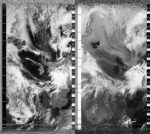
2025-06-04 12:22:38
Alan Robertson
Bathgate, West Lothian,
NOAA-18
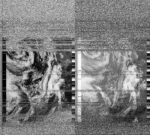
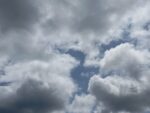
Today is mostly dry with patchy rain, which can be heavy at times.
Sasha Engelmann
sss, aaa
aaa
NOAA-18
xxx
2021-11-01 08:07:13
Natasha Honey
Newcastle, NSW, Aaustralia
Aaustralia
NOAA-19




Bright, Sunny. Not many clouds in the sky, cool breeze.
2025-06-06 09:38:18
Anna Madeleine Raupach
Ngunawal / Ngambri land, ACT Australia
ACT Australia
NOAA-19
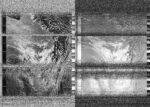
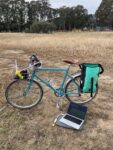
A cold morning after a frosty night - one of the first of our winter.
2023-11-08 07:34:42
Anna Madeleine Raupach
Ngunnawal / Ngambri Country, ACT, Australia
ACT, Australia
NOAA-15

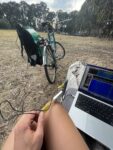
The sun was bright although there were clouds in the sky. I remember there were flies and insects in the air. While receiving this image I noticed my mobile network was down, and after returning home I found out that Optus (one of Australia's main data networks) had a nation-wide outage. I am not sure if this would have affected the signal from NOAA15, but I did notice the radio landscape was more clear than normal that morning – however that did not result in a particularly clear image.
(This is not the best image of the bike-tenna but the one I took on the day of this capture.)
2025-06-01 10:35:35
Anna Madeleine Raupach
Ngunawal / Ngambri Land, ACT, Australia
ACT, Australia
NOAA-18


The heavy fog had not yet lifted by late morning, so tuning into NOAA connected me from below to above clouds in a particularly satisfying way. I have felt the climate crisis recently through the long autumn that has extended into winter giving us beautiful but unnervingly warm days for this time of year.
2024-11-14 08:20:04
Georgia Rhodes
Southern Ocean, Antarctica
Antarctica
NOAA-19
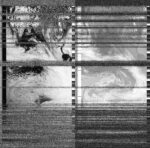

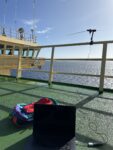
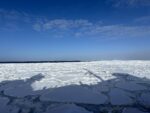
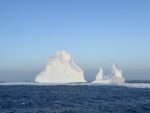
This day was sunny and clear, which was very rare to see during my trip through the Southern Ocean. The second mate has told be this is the grayest, stormiest research cruise he's ever been on. But this particular morning broke clear and bright and while it got a bit dark midday the afternoon was sunny again which offered a shadow of the ship onto the pancake ice. Later, at what would be considered night but is in fact still light, the people of the ship would all pour out onto the decks to see the last glorious iceberg patch we would end up having passed through. The remainder of the time at sea would be in open ocean.
2024-11-15 08:05:33
Georgia Rhodes
Southern Ocean, Antarctica
Antarctica
NOAA-19
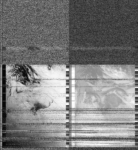
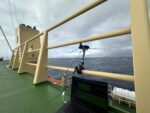
This is the farthest south towards Antarctica my body would go, although I didn't really put that together at the time I was receiving this image.
2024-11-28 08:44:24
Georgia Rhodes
Southern Ocean, somewhere in the vicinity of 170°W, 57°S, Antartica
Antartica
NOAA-19
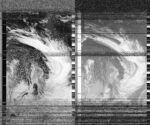
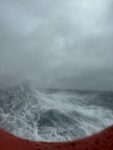
This is an image taken from the porthole next to my desk on the RVIB Nathaniel B. Palmer on the day I imaged the weather. Typically the weather decks on the ship are closed during storms like this, but I was allowed outside to take my satellite reading. It was so windy I had to hold onto the antenna and my computer the entire time.
2021-10-31 07:47:48
Aimee Juhazs
Joaquin Ezcurra
Parque Nacional Ciervo de los Pantanos, Campana, Argentina, Argentina
Argentina
NOAA-15

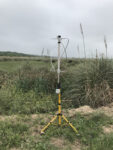
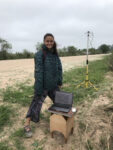
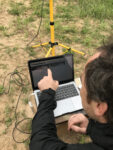

Today was a day of unexpected low temperatures, after many days of intense heat in the region of Buenos Aires and surrounding areas. After a week of record high temperatures -this has been the hottest October in record- the, but the arrival of a Sudestada, cooled the region. The Sudestada (Southeast blow) is a common meteorological phenomenon in the region of Río de la Plata and surrounding areas, of cold winds from the south to the southeast quadrant, which saturates polar air masses with moisture. Since the Río de la Plata is immensely wide and rather shallow, this wind has been historically associated with rising waters and floods. As we were recording the NOAA satellite passes, the wind was blowing at roughly 30kms per hour – and increasing- from the SE, and the temperature falling. The moving mass of air lifted the dust of a dirt road, and at times, the screen of my laptop moved when it received a sudden wind gust. The arrival of this breeze had us a little worried if it would be accompanied with precipitation, but thankfully no, we could do the whole satellite pass without getting wet. The wind did give us a sense of excitement and connection with what we were doing. In this respect, as the sky was overcast, we reflected on how the satellite download link was offering us a glimpse above the very same clouds we were seeing.
2021-10-31 07:48:00
pablo cattaneo
mar del plata, Argentina
Argentina
NOAA-15
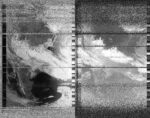


muy bueno hacer la antena instalar configurar sdr para ls recepcion, hay mucho para mejorar sin duda.
2021-10-31 10:05:49
Aimee Juhazs
Joaquin Ezcurra
Parque Nacional Ciervo de los Pantanos, Campana, Argentina, Argentina
Argentina
NOAA-18
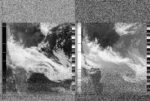
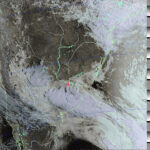
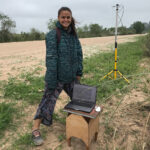
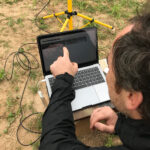
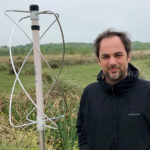
Today was a day of unexpected low temperatures, after many days of intense heat in the region of Buenos Aires and surrounding areas. After a week of record high temperatures -this has been the hottest October in record- the, but the arrival of a Sudestada, cooled the region. The Sudestada (Southeast blow) is a common meteorological phenomenon in the region of Río de la Plata and surrounding areas, of cold winds from the south to the southeast quadrant, which saturates polar air masses with moisture. Since the Río de la Plata is immensely wide and rather shallow, this wind has been historically associated with rising waters and floods. As we were recording the NOAA satellite passes, the wind was blowing at roughly 30kms per hour – and increasing- from the SE, and the temperature falling. The moving mass of air lifted the dust of a dirt road, and at times, the screen of my laptop moved when it received a sudden wind gust. The arrival of this breeze had us a little worried if it would be accompanied with precipitation, but thankfully no, we could do the whole satellite pass without getting wet. The wind did give us a sense of excitement and connection with what we were doing. In this respect, as the sky was overcast, we reflected on how the satellite download link was offering us a glimpse above the very same clouds we were seeing.
2025-05-18 20:52:00
Iterable pueyrredon
Cordoba , Argentina
Argentina
NOAA-15

2025-05-19 10:41:00
Iterable pueyrredon
Cordoba , Argentina
Argentina
NOAA-19

2025-05-19 23:08:00
Iterable pueyrredon
Cordoba , Argentina
Argentina
NOAA-19

2025-05-20 07:40:00
Iterable pueyrredon
Cordoba , Argentina
Argentina
NOAA-15

2025-05-20 10:28:00
Iterable pueyrredon
Cordoba , Argentina
Argentina
NOAA-19

2025-05-20 20:01:00
Iterable pueyrredon
Cordoba , Argentina
Argentina
NOAA-15
2025-05-20 21:41:00
Iterable pueyrredon
Cordoba , Argentina
Argentina
NOAA-15
2025-05-20 22:55:00
Iterable pueyrredon
Cordoba , Argentina
Argentina
NOAA-18
2025-05-20 22:56:00
Iterable pueyrredon
Cordoba , Argentina
Argentina
NOAA-19
2025-05-21 10:16:00
Iterable pueyrredon
Cordoba , Argentina
Argentina
NOAA-19
2025-05-21 11:52:00
Iterable pueyrredon
Cordoba , Argentina
Argentina
NOAA-18
2025-05-21 21:14:00
Iterable pueyrredon
Cordoba , Argentina
Argentina
NOAA-15
2025-05-22 08:28:00
Iterable pueyrredon
Cordoba , Argentina
Argentina
NOAA-15

2025-05-22 10:03:00
Iterable pueyrredon
Cordoba , Argentina
Argentina
NOAA-19
2025-05-22 11:39:00
Iterable pueyrredon
Cordoba , Argentina
Argentina
NOAA-18
2025-05-22 20:48:00
Iterable pueyrredon
Cordoba , Argentina
Argentina
NOAA-15
2025-05-23 08:02:00
Iterable pueyrredon
Cordoba , Argentina
Argentina
NOAA-15

2025-05-23 11:27:00
Iterable pueyrredon
Cordoba , Argentina
Argentina
NOAA-18

2025-05-23 20:22:00
Iterable pueyrredon
Cordoba , Argentina
Argentina
NOAA-15

2025-05-23 23:53:00
Iterable pueyrredon
Cordoba , Argentina
Argentina
NOAA-18

2025-05-24 07:36:00
Iterable pueyrredon
Cordoba , Argentina
Argentina
NOAA-15

2025-05-24 11:14:00
Iterable pueyrredon
Cordoba , Argentina
Argentina
NOAA-18

2025-05-24 23:41:00
Iterable pueyrredon
Cordoba , Argentina
Argentina
NOAA-18

2025-05-25 11:01:00
Iterable pueyrredon
Cordoba , Argentina
Argentina
NOAA-18

2025-05-25 21:09:00
Iterable pueyrredon
Cordoba , Argentina
Argentina
NOAA-15

2025-05-25 23:33:00
Iterable pueyrredon
Cordoba , Argentina
Argentina
NOAA-19

2025-05-26 08:23:00
Iterable pueyrredon
Cordoba , Argentina
Argentina
NOAA-15
2025-05-26 10:53:00
Iterable pueyrredon
Cordoba , Argentina
Argentina
NOAA-19
2025-05-26 23:16:00
Iterable pueyrredon
Cordoba , Argentina
Argentina
NOAA-18
2025-05-26 23:20:00
Iterable pueyrredon
Cordoba , Argentina
Argentina
NOAA-19
2025-05-27 07:57:00
Iterable pueyrredon
Cordoba , Argentina
Argentina
NOAA-15
2025-05-27 10:40:00
Iterable pueyrredon
Cordoba , Argentina
Argentina
NOAA-19
2025-05-27 20:17:00
Iterable pueyrredon
Cordoba , Argentina
Argentina
NOAA-15
2025-05-27 23:04:00
Iterable pueyrredon
Cordoba , Argentina
Argentina
NOAA-18
2025-05-28 07:31:00
Iterable pueyrredon
Cordoba , Argentina
Argentina
NOAA-15
2025-05-28 10:28:00
Iterable pueyrredon
Cordoba , Argentina
Argentina
NOAA-19